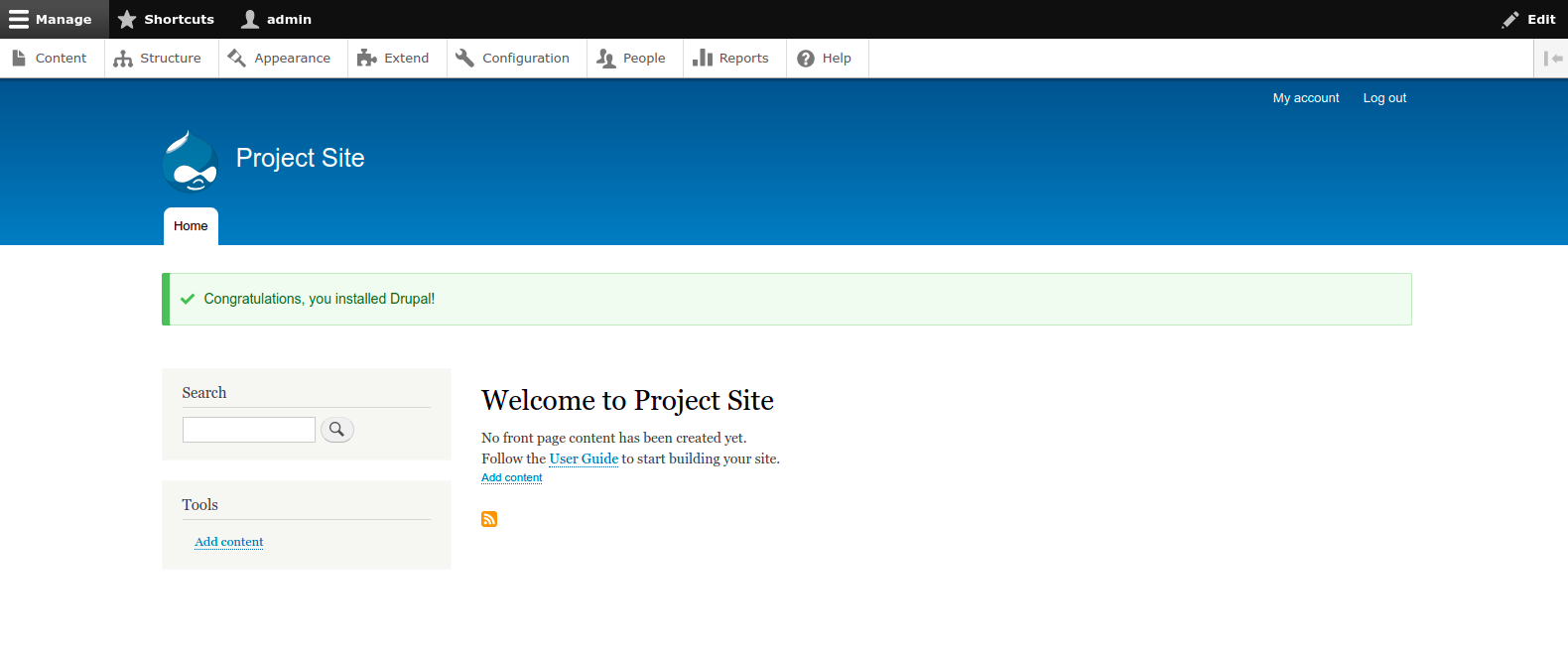Steps to Install & Configure Drupal on Ubuntu
Drupal is a free & open source content management system (CMS),which is written in PHP and released under GPL.It is used for creation of dynamic websites, even quite complex ones.
Prerequisites:
- Ubuntu machine with Sudo Privileges.
There are some steps to setup Drupal on Ubuntu:
Step 1: Update the System.
apt update
Step 2:Install Apache2.
apt install apache2
- Start & Enable the Apache2 service.
systemctl start apache2
systemctl enable apache2
Step 3: Install PHP.
apt install php libapache2-mod-php php-cli php-fpm php-json php-common php-mysql php-zip php-gd php-intl php-mbstring php-curl php-xml php-pear php-tidy php-soap php-bcmath php-xmlrpc
Step 4: Install MySQL Server.
apt install mysql-server
- Start & Enable the MySQL server.
systemctl start mysql
systemctl enable mysql
Step 5: Configure the MySQL Database.
- Login to MySQL Shell.
mysql -u root -p
- Provide the Password or Press the Enter.
- Here is the command output.

- Create a User & Set a password.
CREATE USER drupal_user@localhost IDENTIFIED BY "Password";
- Create database.
create database drupaldb;
- Run Grant all privileges command.
GRANT ALL ON drupaldb.* TO drupal_user@localhost;
- Run Flush privileges & Exit commands.
FLUSH PRIVILEGES;
exit
- Here is the command output.

Step 6: Now Download the Drupal on system.
wget https://www.drupal.org/download-latest/tar.gz -O drupal.tar.gz
- Here is the command output.

- Extract the downloaded folder.
tar -xvf drupal.tar.gz
- Move the extracted folder to /var/www/html/.
mv drupal-9.3.9 /var/www/html/drupal
- Provide the following permissions.
chown -R www-data:www-data /var/www/html/drupal/
chmod -R 755 /var/www/html/drupal/
- Here is the command output.

Step 7: Configure the Apache virtual host file.
- Create a file.
vim /etc/apache2/sites-available/drupal.conf
- Add the following lines:
<VirtualHost *:80>
ServerAdmin admin@example.com
DocumentRoot /var/www/html/drupal/
ServerName example.com
ServerAlias www.example.com
ErrorLog ${APACHE_LOG_DIR}/error.log
CustomLog ${APACHE_LOG_DIR}/access.log combined
<Directory /var/www/html/drupal/>
Options FollowSymlinks
AllowOverride All
Require all granted
</Directory>
<Directory /var/www/html/>
RewriteEngine on
RewriteBase /
RewriteCond %{REQUEST_FILENAME} !-f
RewriteCond %{REQUEST_FILENAME} !-d
RewriteRule ^(.*)$ index.php?q=$1 [L,QSA]
</Directory>
</VirtualHost>
- Here is the output.

- Disable the default file.
a2dissite 000-default.conf
- Enable the file.
a2ensite drupal.conf
- Run rewrite command.
a2enmod rewrite
- Restart the Apache2 service.
systemctl restart apache2
- Here is the command output.

Step 8: Open Drupal Web Interface.
http://server-ip
- Here is the output.
- Select the Language.
- Click on Save & Continue.
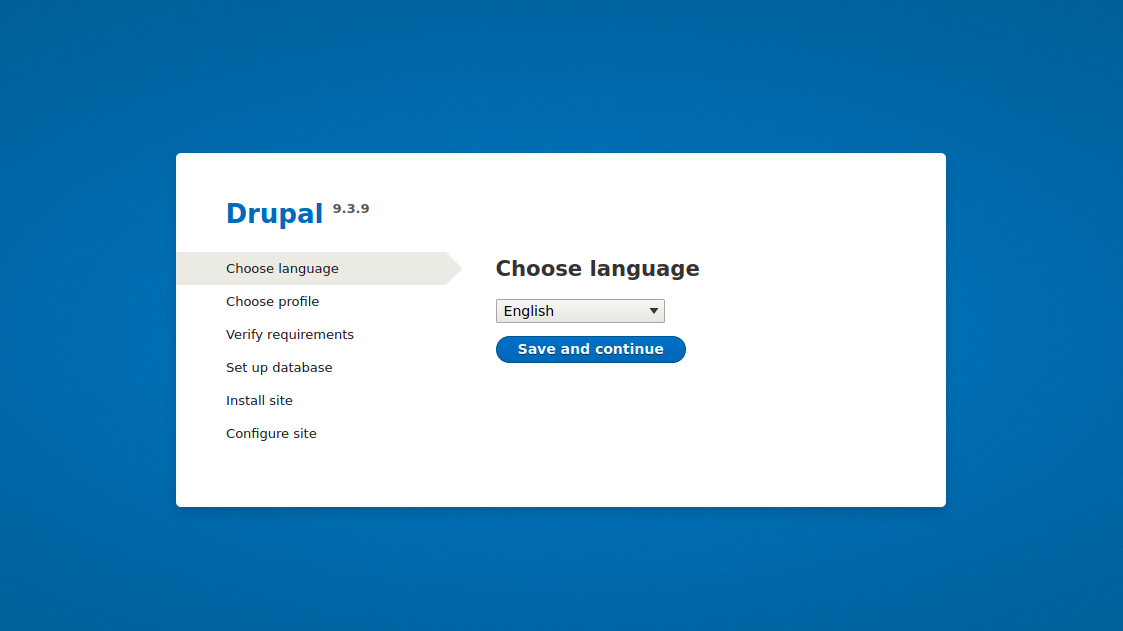
- Select Standard profile for Installation.
- Click on Save & Continue.
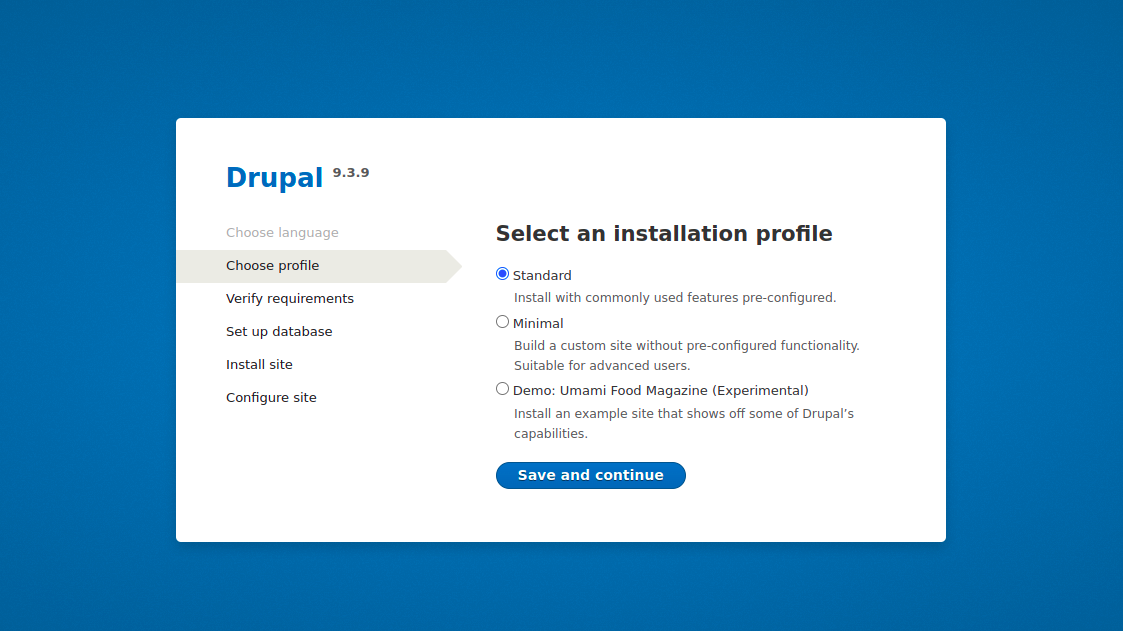
- Configure the database,provide the db username,db name & db password.
- Click on Save & Continue.
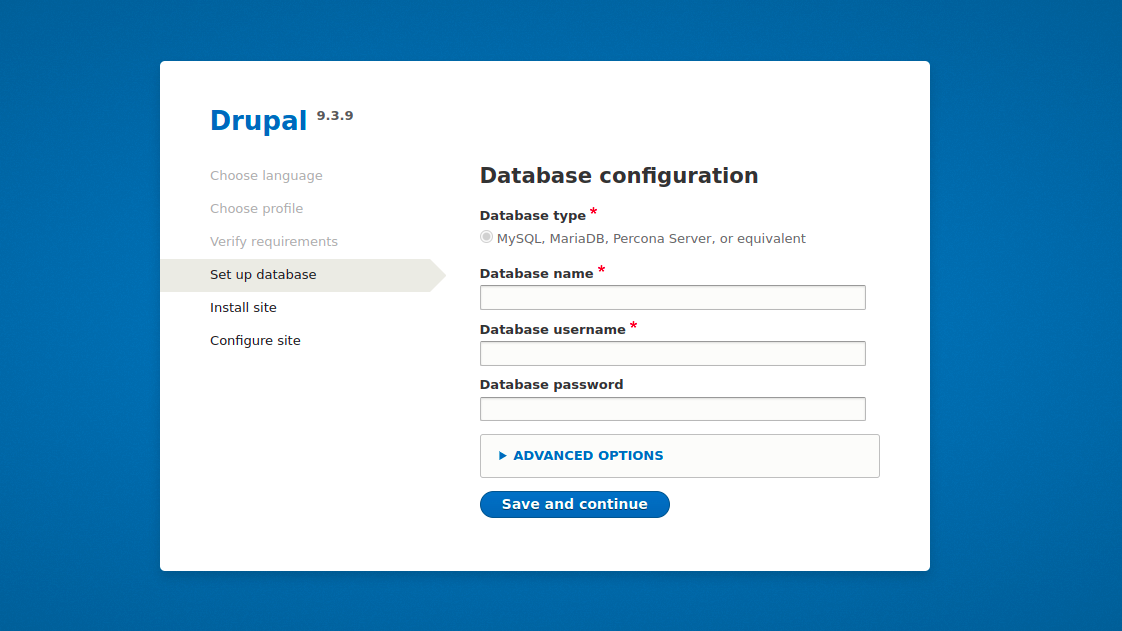
- Now Installation is started.
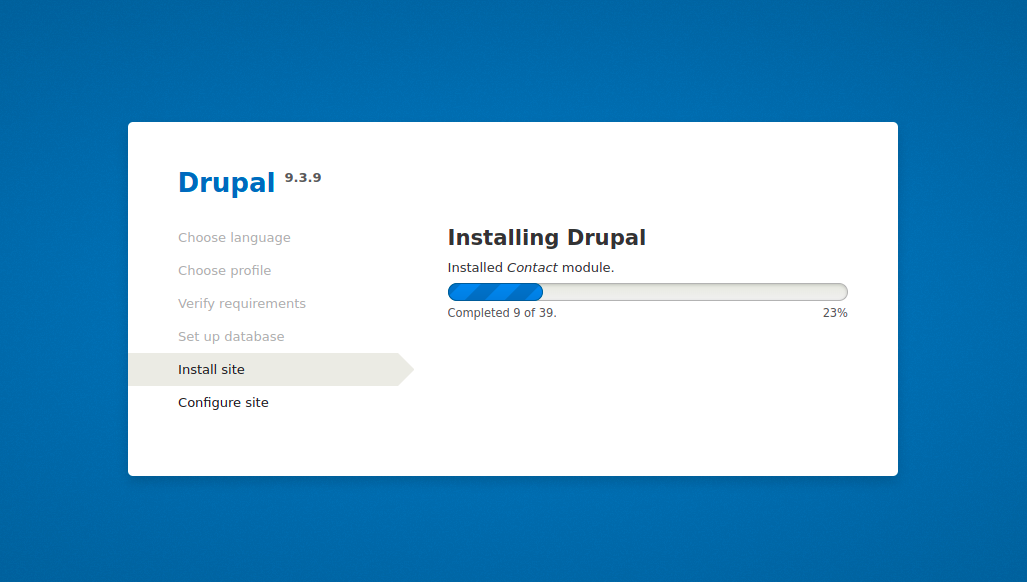
- Configure the Site.
- Provide the required information such as Site name,Email-address,username & password.
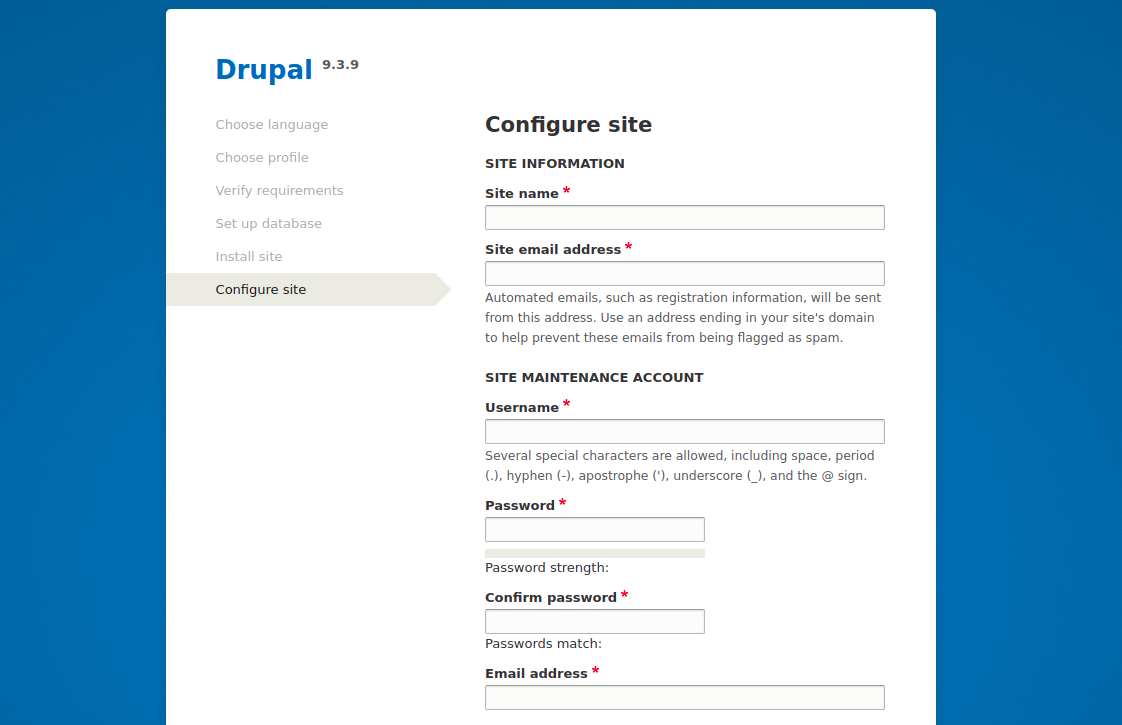
- Select country & Time zone.
- Click on Save & Continue.

- Now Drupal is Ready.
